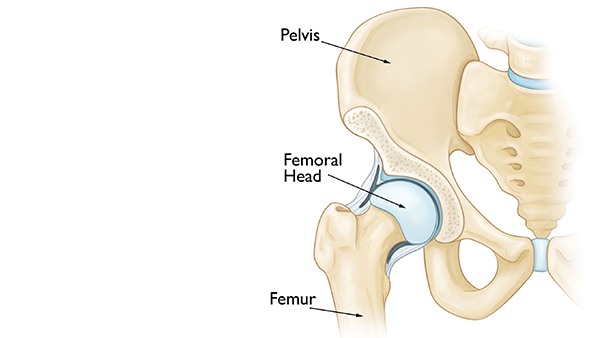Hip Pain
Symptoms, Causes, and Conditions
Hip pain is a prevalent issue that can significantly impact daily activities and quality of life. This article explores the symptoms, causes, and various conditions associated with hip pain.

About the hip Joint
The hip is a ball and socket joint located at the top of your thigh bone, it gives the stability needed to bear your body weight and allows movement to happen.
A layer of articular cartilage covers the ball and socket joint and enables it to glide together easily and cushions your joints. Once arthritis occurs, a loss of cartilage ensues leading to bone-on-bone contact which causes damage to the bone, inflammation and a great degree of pain and discomfort.
The most common type of arthritis that can affect the hip is primary osteoarthritis, also known as degenerative arthritis. It is associated with wear and tear of the hip joint as you get older and can affect you especially if there is a family history of it.
Symptoms of Hip Pain
Hip pain can manifest in several ways, often depending on the underlying cause. Common symptoms include:
Localized Pain
Pain may be felt directly in the hip joint or radiate to the groin, thigh, or knee.
Stiffness
Swelling and Bruising
Limping
Referred Pain
Causes of Hip Pain
Hip pain can arise from various factors, including injuries, degenerative conditions, and systemic diseases. Key causes include:
Arthritis
Bursitis
Tendonitis
Injuries
Avascular Necrosis
This condition occurs when blood supply to the bone is compromised, leading to bone death. It can result from trauma or long-term use of certain medications
Referred Pain
Conditions affecting other areas of the body, such as sciatica from spinal issues, can manifest as hip pain. This type of pain is often described as sharp or burning and may radiate down the leg
Conditions Associated with Hip Pain
Several specific conditions are known to cause hip pain
Osteoarthritis
A degenerative joint disease characterized by cartilage breakdown leading to pain and stiffness.
Rheumatoid Arthritis
An autoimmune disorder that causes inflammation in joints, including the hips.
Hip Fractures
Commonly seen in older adults due to falls; fractures can lead to severe pain and inability to bear weight.
Labral Tears
Injuries to the cartilage surrounding the hip joint can result in pain during movement
Greater Trochanteric Pain Syndrome
A condition involving inflammation of tendons around the greater trochanter (the bony prominence on the side of the hip) often linked to bursitis or tendonitis
Conclusion
Hip pain is a complex symptom with numerous potential causes ranging from acute injuries to chronic conditions like arthritis. Identifying the specific cause is crucial for effective treatment. If you experience persistent or worsening hip pain, it is advisable to consult a healthcare professional for a comprehensive evaluation and appropriate management strategies.
